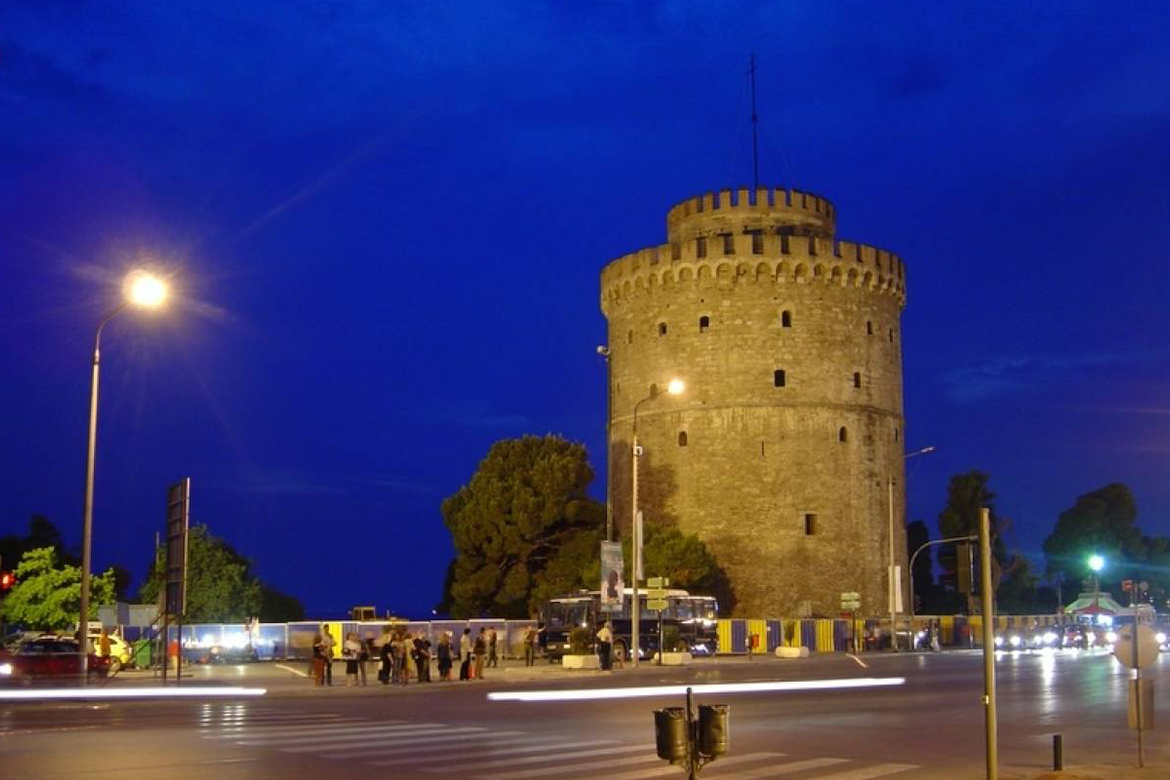A trademark of the city of Thessaloniki, the White Tower is a fortification work of Ottoman construction of the 15th century (built ca 1450-70).
It is located on the seafront and is 6 storeys and 34 meters high and 70 meters in perimeter.
During the Turkish occupation, modifications were made to the city walls, including the White Tower, the Heptapyrgion and the Triangle Tower (the latter dating to the 16th century) that connected the eastern part of the fortification of Thessaloniki (which survives today) with its seafront (demolished in 1867).
It has been speculated that the structure was designed by the renowned architect Mimar Sinan, due to the tower’s similarity with a tower at the Albanian port Vlorë (Avlona) built in the 1530s.
Around the tower grounds there used to be, in the past, a low octagonal enclosure (wall) with three octagonal towers, which served mainly to protect the Tower from the sea and was demolished in the early 20th century.
In the 19th century, the White Tower, used by the Ottoman torturers and executioners, was called “Tower of Blood” as it was “stained” with the blood of the victims led to execution by the Janissaries.
When the Greeks freed Thessaloniki in 1912 during the first Balkan War, the Tower was white – a symbol of cleansing. The monument became the property of the Greek state and at it is top the Greek flag was raised, using, as a flagpole, the main mast of the Turkish battleship “Fetih Bulent”, which was torpedoed by the Hellenic torpedo-boat T-11 commanded by Admiral Nikolaos Votsis, whose bust is located west of the White Tower.
For the visitor who will go up to the balcony of the White Tower, the view is panoramic both towards the Thermaic Gulf and the mountain top of Olympus as well as to Ano Poli and Eastern Thessaloniki.
In the surrounding area, the buildings are built to match the historical importance of the monument, as, e.g. the building of the Society for Macedonian Studies, just across the street, and the Officers’ Guard Club on Ethnikis Amynis Str.
The Archaeological Museum and the Museum of Byzantine Culture, the two most important Museums of Thessaloniki, are situated only a short distance from the White Tower, and the statue of the great military commander, Alexander the Great at a distance of only 400m.
You can sit on the stone terraces enjoying the view or walk a length of 3.2 km on Nea Paralia towards the Concert Hall. In the afternoon you can come across the military procession that daily retreats the Greek flag on the balcony of the White Tower. We were there at 8 am and recorded the reveille of the Greek flag by an honorary guard detachment of the Corps Officers Military Academy, accompanied by a band that played the Greek national anthem.

